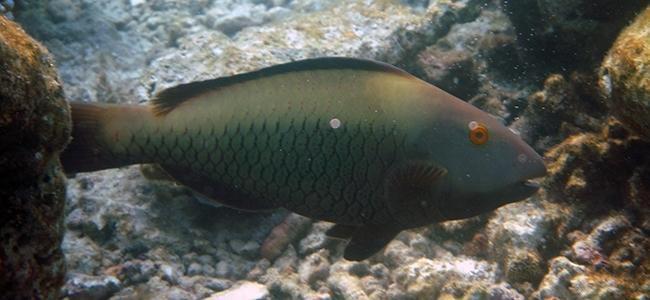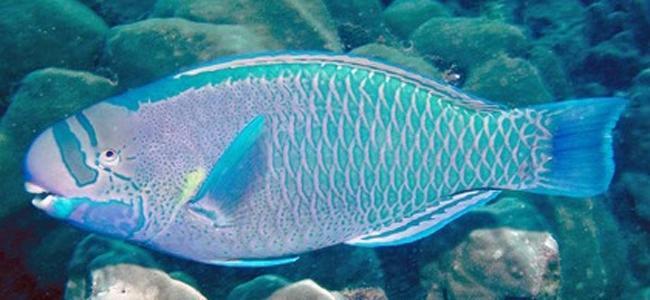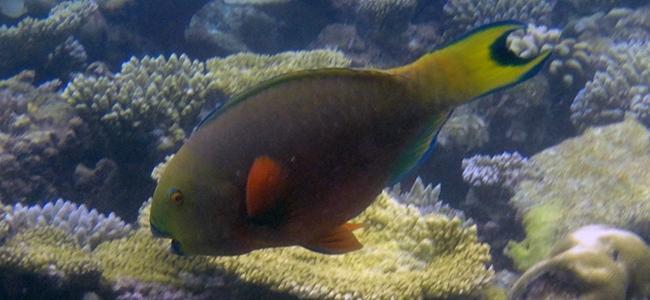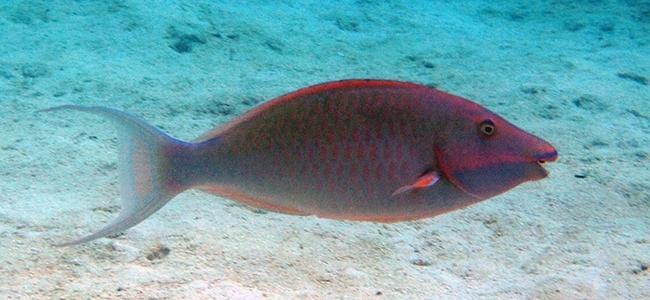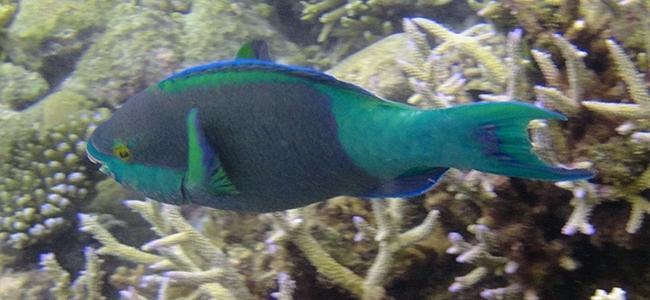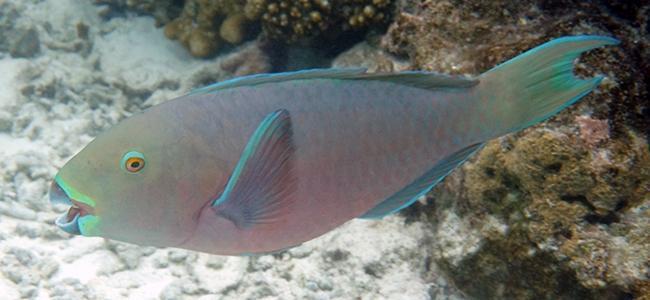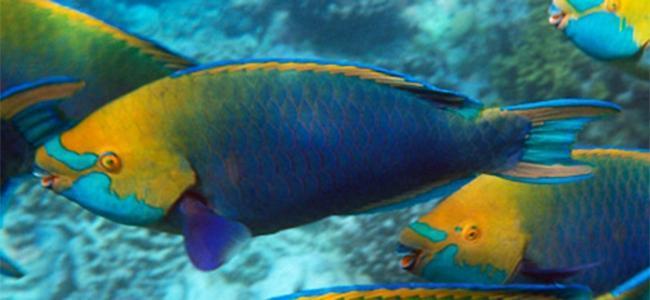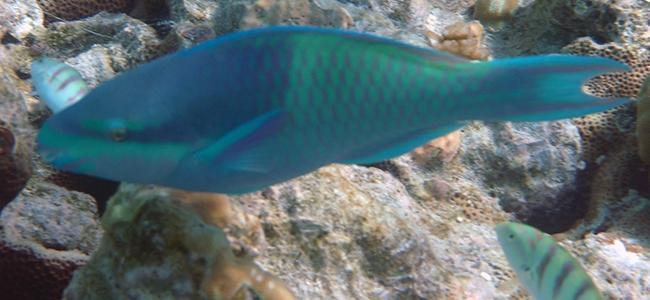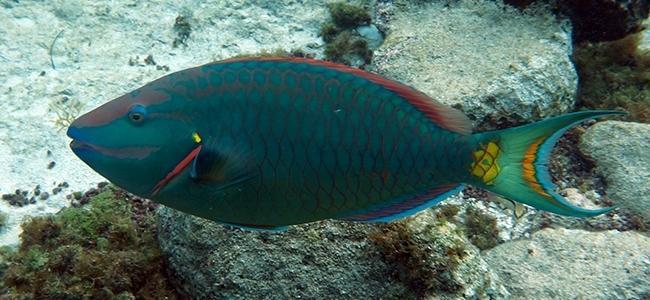Parrotfishes (Scaridae), are a family of fish belonging to the Perciformes, and we will find in most tropical seas, both the Atlantic, Indian and Pacific Ocean. The scientific name, Scaridae, derives from the Greek skairos, in allusion to the ability to jump and strike with their tails. As for the colloquial term for this family, the Parrotfishes, the term is due to their characteristic dentition, the teeth of which fuse together to form a structure that resembles a parrot's beak. This beak is used by Parrotfishes to gnaw on coral and rocks, and thus obtain the Algae on which they feed. After ingesting the Algae and even small invertebrates that may be present on the rocks, its powerful teeth and digestive system, it pulverizes the rocks to form a sand. Such is the amount of sand they generate that their contribution to the accumulation on the islands and atolls of the coral reefs is very significant.
The coloration of the body of Parrotfishes is usually very striking in many of the species. The coloration pattern is very diverse and is used to identify the species. However, the pattern can vary considerably with growth and with another of the characteristics of this family of fish, and that is that they are capable of changing sex, and this results in a change in their coloration and patterns of this.
Generally, Parrotfishes have a single, continuous dorsal fin formed by 9 spines and 10 soft spokes. The anal fin has 3 spines and 9 spokes; the pelvic fin has 1 spine and 5 spokes; and finally, the caudal fin has its branched spokes. Certain species are known to secrete a mucous membrane during the night in the nooks and crannies where they hide. This cover serves them to mask the fish's own body odor, and thus go unnoticed by possible nocturnal predators. There are 99 species described within the Parrotfish family, organized into 10 genera.
